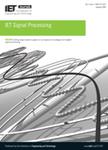版权所有:内蒙古大学图书馆 技术提供:维普资讯• 智图
内蒙古自治区呼和浩特市赛罕区大学西街235号 邮编: 010021

作者机构:Natl Univ Def Technol Coll Elect Sci & Engn Changsha 410073 Hunan Peoples R China Natl Univ Singapore Dept ECE Singapore 117576 Singapore
出 版 物:《IET SIGNAL PROCESSING》 (IET Signal Proc.)
年 卷 期:2010年第4卷第4期
页 面:343-351页
核心收录:
主 题:targets separation Doppler frequency shift stepped-frequency waveform motion compensation Doppler shift particle swarm optimisation motion compensation algorithms Optical, image and video signal processing radar targets ISAR imaging translation motion synthetic aperture radar radar imaging Optimisation techniques Radar equipment, systems and applications radar target recognition adaptive joint time frequency approach linear frequency modulated
摘 要:When multiple radar targets are close to each other, the returned signals from these targets are overlapped in time. Therefore by applying conventional motion compensation algorithms designed for single target, the multiple targets cannot be resolved, and individual one cannot be clearly imaged. The authors conclude that whether the radar transmits linear frequency modulated (LFM) or stepped-frequency waveform, the chirp rate in the Doppler frequency shift induced by the translation motion is only concerned with the acceleration of the target. For different targets, the chirp rates are different from each other. Based on the different chirp rates, the signals from each target can be separated. Then a new algorithm based on the adaptive joint time frequency (AJTF) technique is proposed to separate the signals from different target in each cross-range cell. The use of the particle swarm optimisation (PSO) for multiple targets separation is a unique application of this evolutionary search. By the CLEAN technique, the number of targets need not be appointed. The simulation results confirm the efficiency of the proposed algorithm for multiple moving targets imaging.